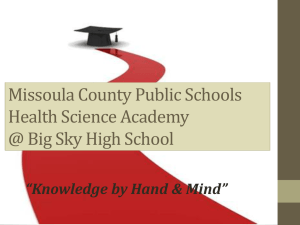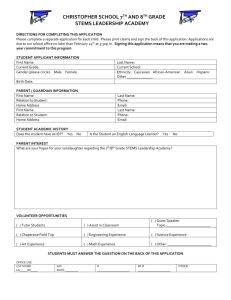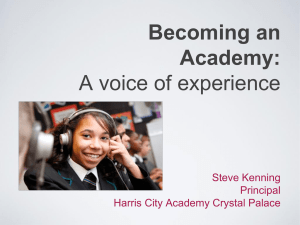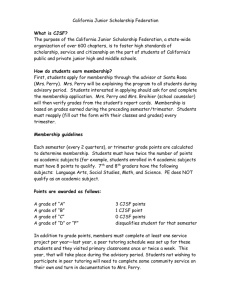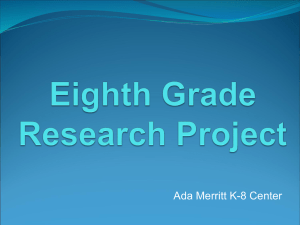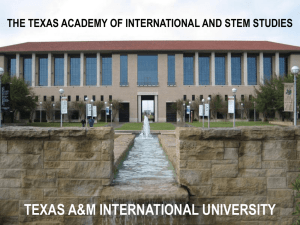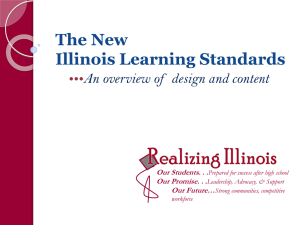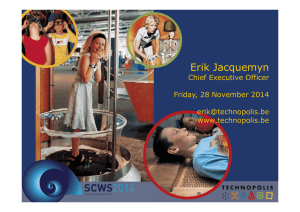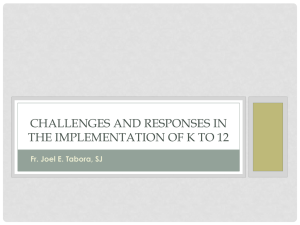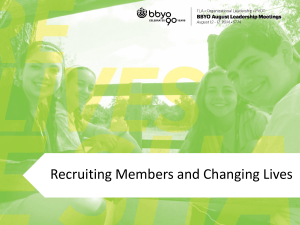Forest Heights K-8 STEM Academy Goals
advertisement
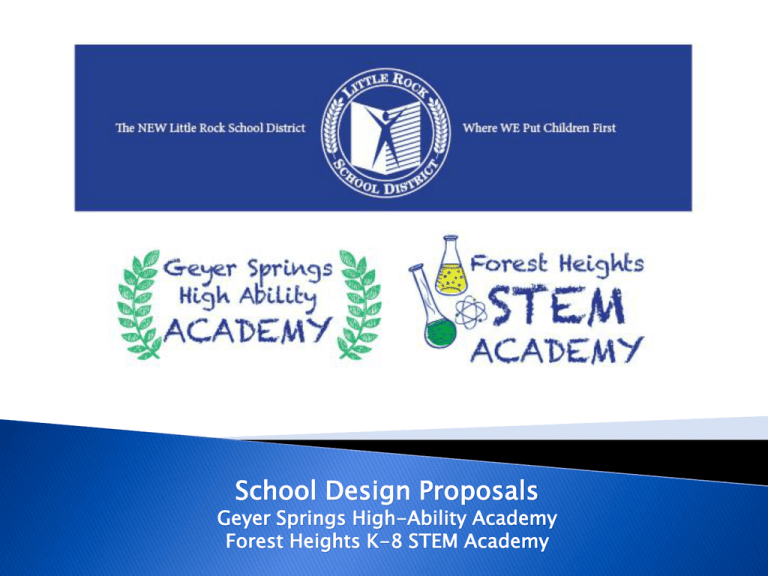
School Design Proposals Geyer Springs High-Ability Academy Forest Heights K-8 STEM Academy To promote student excellence in academics, collaboration and communication while developing 21st century leadership skills To implement an accelerated curriculum and rigorous educational experiences for highability students that promote creativity and high levels of task commitments As part of the planning process, committee researched exemplary model sites Sidener Gifted Academy, Indianapolis, identified as model school site Identified as a top scoring school in Indiana Serves 266 students grades 2 – 7 Demographics include: 65% free and reduced lunch eligibility Ethnicity: Caucasian - 42% African-American – 38% Hispanic – 10% Multiracial – 9% Asian – 1% Staged expansion between 2014 – 2017 Initial projected enrollment of 225 students in grades 3 – 6 7th grade added in 2015 – 2016 8th grade added in 2016 - 2017 Total enrollment of 375 by 2016 – 2017 8:45 – 3:45 Breakfast in the Classroom Transportation provided After school care Research-based best practices which encourage academic and creative productivity Rigorous, accelerated curriculum-based learning Differentiated instructional approach Self-directed learning opportunities Applied, interdisciplinary learning Project-based, inquiry-based, problem-based Enrichment opportunities: foreign language, the arts, special interest-based projects Integrated technology Specialized curricular materials developed by the William and Mary College Center for Gifted Education for language arts, mathematics, science, and social studies Designed to respond to gifted learners’ learning characteristics Includes three dimensions: advanced content; higher level processes; product development Video clip of the Renzulli Academy, another model site informing the GSHA Academy Quiz Bowl Destination Imagination National History Day Science Fair Shakespeare Scene Festival Lego Competitions Worldfest Athletics for 7th and 8th graders 1:1 Technology All students and staff equipped with laptops Technology utilized across the curriculum and embedded into the instruction and assessment processes Technology will support all aspects of student learning Technology will promote collaboration among teachers and students Twenty-seven staff members Nineteen certified staff Eight non-certified staff Special services staff will be assigned based on student need. An array of community partners will provide resources and support for the GSHA Academy UALR Arkansans for GT Education LR Museum of Discovery Duke University Talent ID Program Dr. Ann Robinson, Director UALR Mahoney Center for Gifted Education To create student interest in education and careers, specifically in STEM-related fields To develop a school culture focused on active learning, problem solving, and academic success To involve students in rigorous and engaging programs to promote excellence in literacy, math, science and technology To provide innovative, hands-on experiences that include connections to the community and realworld challenges A K-8 school focuses on STEM learning for student success and academic excellence STEM = Science, Technology, Engineering, and Mathematics STEM Academy = Hands-on learning, inquiry learning, problem-solving/project-based student work, college and career focus Research shows improvements in academic performance and behavior Smaller grade size promotes inclusive academic community Longer school stay promotes closer relationships with staff and other students Softens the transition to middle 6-8th graders placed in role model position A critical component in planning the FHSA was to review successful STEM schools. The Annie Fisher K-8 STEM school in Hartford, Connecticut opened in August 2010 and was recognized by the USDOE as a 2012 National Blue Ribbon School. Serves 350 K-8th grade students Demographics:African-American-47%;Caucasian–25% Hispanic–12%; Asian-12%; and 4% other Grade levels: K – 8th grades Total enrollment: 715 students Kindergarten: Two classes with 20 students each 1st through 5th grades: Three classes with 25 students each 6th through 8th grades: 100 students per grade level 8:45 – 3:45 Breakfast in the Classroom for K – 5th graders Transportation Care program Uniforms Separate lunchtimes for K-5 and 6 – 8 Innovative well-rounded academic curriculum Interactive Science curricula: a standardsbased, next generation K-8 program that teaches science topics taught inquiry, digital experiences, in-depth lab experiences, virtual labs, and engineering concepts and practices. Technology literacy through EasyTech online curriculum for K- 8th graders District’s math, literacy, social studies, art and music curriculums Project Lead the Way Launch for K – 5th grade students Students learn the foundational science behind engineering concepts and designs Activities and projects lead to asking questions, exploring ideas and solving problems Examples of units include Structure and Function; Light and Sound; Properties of Matter Project Lead the Way Gateway to Technology Sequence of engineering courses for students grades 6 – 8 Exposes students to hands-on learning experiences and is designed to ignite student interest in engineering fields Courses include Design and Modeling, Automation and Robotics, Magic of Electrons, Medical Detectives and Green Architecture Engineering is Elementary is a K-5th grade integrated engineering curriculum developed by the Museum of Boston. Through the lessons, students engage in the engineering design process, apply science and math to engineering problems, use creativity, troubleshoot, learn from failure and understand the role of materials in solution. Video Embedded Enrichment ◦ ◦ ◦ ◦ ◦ ◦ Lego League Future City Design Squad Maker Education Chess Competitions, showcases, events Dr. Eric Sandgren, Dean UALR College of Engineering and Information Technology ◦ ◦ ◦ ◦ ◦ ◦ ◦ Speakers Career Awareness Mentors Field trips Teacher Training Enrichment Program and Event Support Comprehensive campaign using a variety of internal and external sources and media tools Stakeholders to receive timely and accurate information Message disseminated in English and Spanish Appropriate delivery system to communicate to varied audiences Electronic and print media combined with face to face communications such as community meetings
